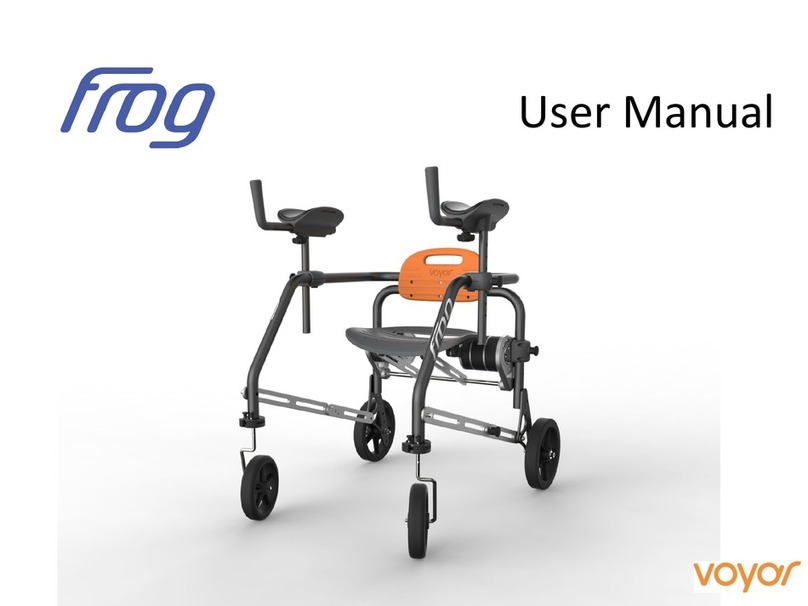
1.3. Safety Information
•The walker should be used indoors and on fairly firm and level ground
•Maximum weight of the user needs to be observed
•Instructions for use should be read carefully before first use. Instructions for use should be kept and
remain with the product for future reference.
•All locks and adjustment knobs on the frame, armrests, seat and wheels need to be checked before
first use and at regular intervals.
•The walking aid should not be used without an accompanying person. Accompanying persons must
be adequately instructed.
•The users should remain within the frame during use.
•Adjustments for handle and the frame width need to remain within the marked maximum limits.
Contraindications :
Users not being able to tolerate an upright position (circulatory issues) or tolerate weight-bearing
(osteogenesis imperfecta, severe osteoporosis, joint instability, severe contractures), as well as
significant lack of head control.
Please report any serious incident that occurred in relation to the device to the manufacturer, XentiQ
Partners Pte Ltd, and to the competent authority of the Member State where the user is established.
8




























